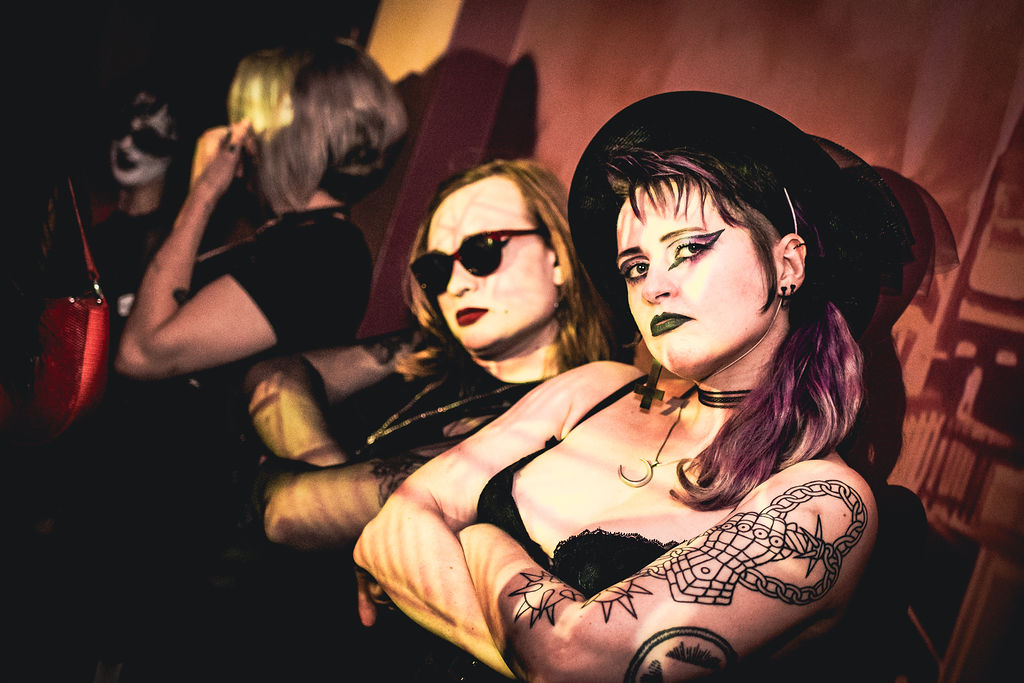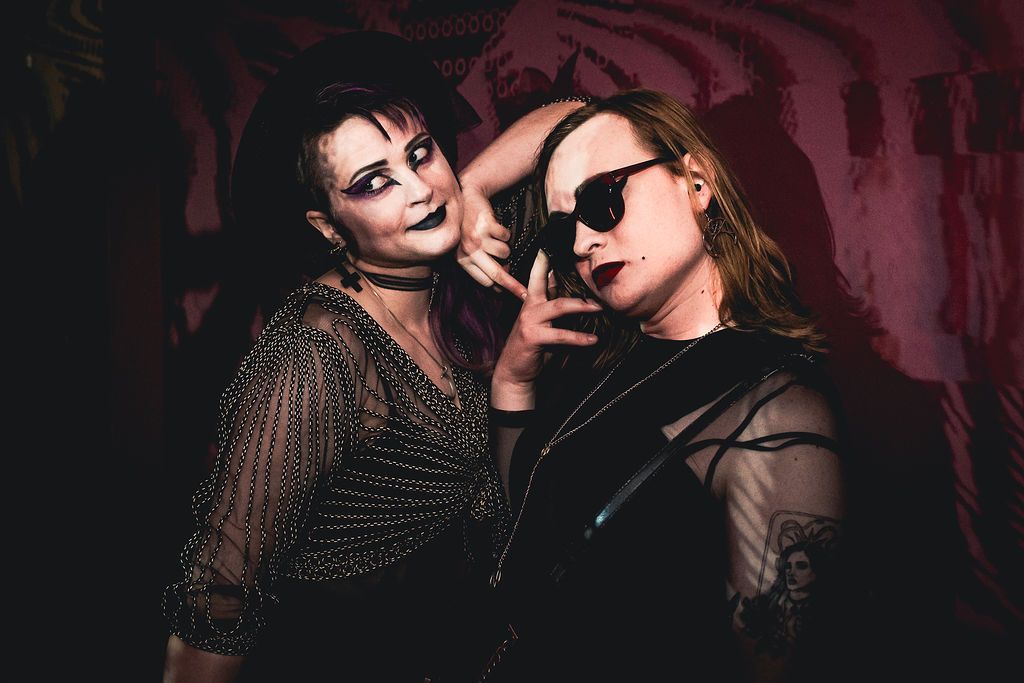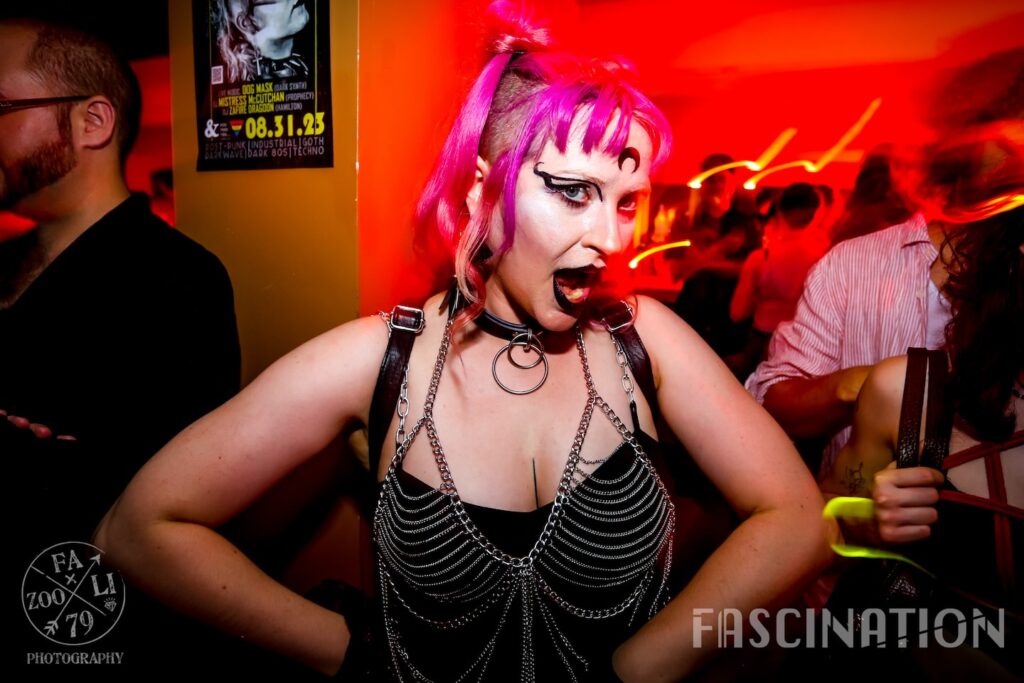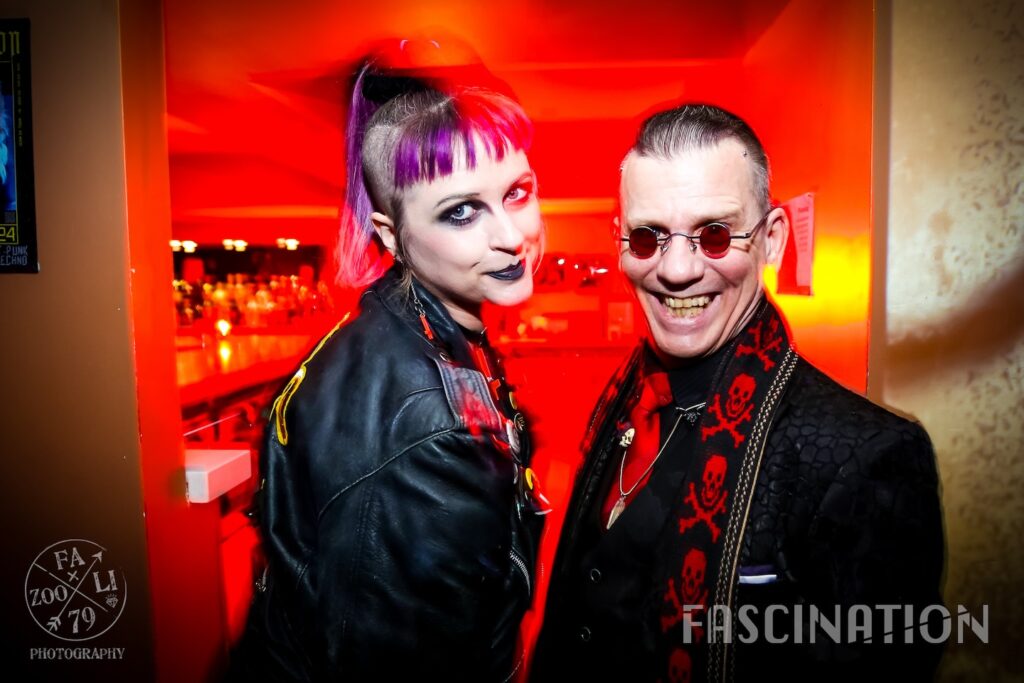Don’t be afraid of the dark
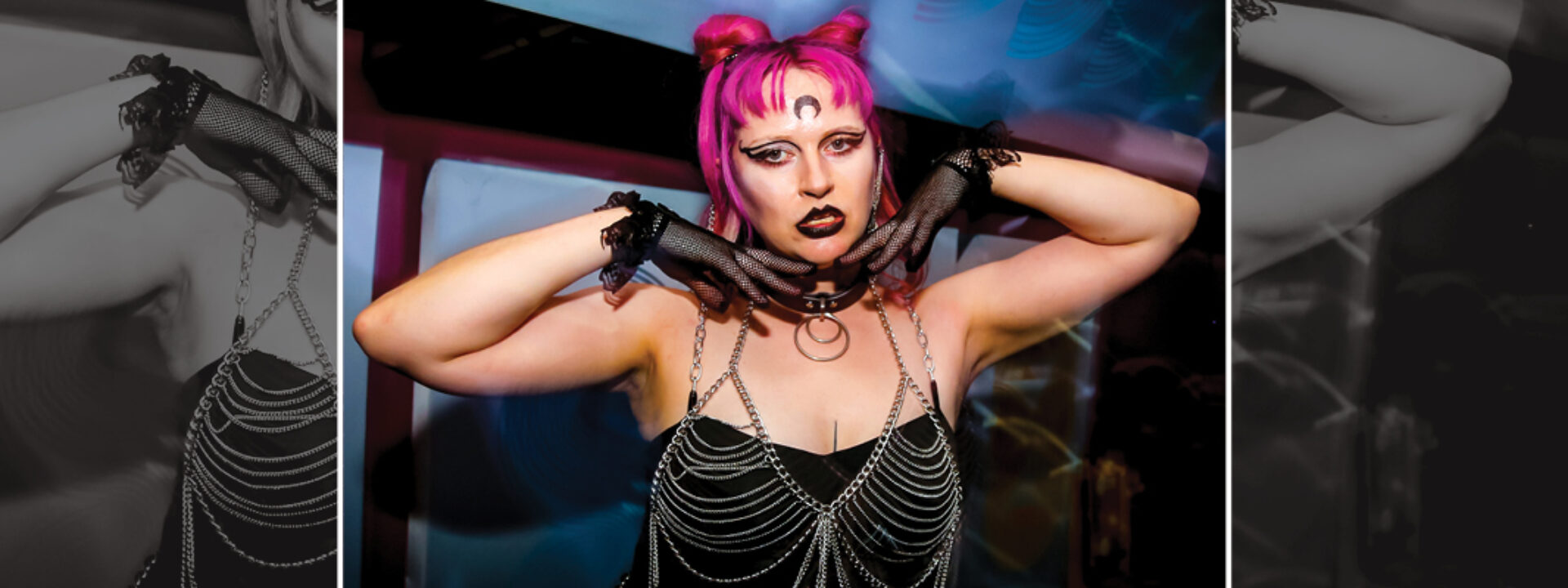
Goth – and dark subculture in general – has re-emerged as a cultural force in music and fashion in Hamilton and beyond.
What: The youth subculture known as “goth” began in the late ’70s and early ’80s in the U.K. The word “goth” is still used by many, but over time dark music, fashion and culture have cross-pollinated and expanded into a variety of subcultures that revolve around a dark aesthetic.
Who: Anyone, really. Though it’s a mistake to generalize, dark subcultures are by and large highly inclusive and welcoming spaces for young people and elder goths alike. It can also be a safe space for those who resist societal norms of sexuality and sexual expression, openly welcoming LGBTQIA+ and often incorporating drag culture.
Where: Goth and dark events have recently become popular and frequent in Hamilton. Check out Fascination (last Thursday of every month at &ThenYou, hosted by Babette laFlail) or Therapy/Asylum nights (at Casbah, hosted by Dark Hamilton, which promotes dark art, music, fashion, movies and events).
Where to find more: Look for laFlail @honeyboiler and @fascinationdarkdjnights and Dark Hamilton (@darkhamilton or dark.hamilton on Instagram)
Youth subcultures have always unsettled the mainstream and terrified the straightlaced (until someone finds a way to monetize it, but that’s another article).
Goths unsettle and terrify without a sneer or the threat of violence. Like all subcultures, they’re merely misunderstood, thanks to the fact that they might be dressed like they’ve come from a Victorian funeral. Or maybe they look like they’ve been dressed by the costume designer of Hellraiser. Or maybe they just borrowed a look from Gottmik (shout-out Drag Race, season 13!). It’s not threatening-scary, it’s spooky-scary. And it’s back, if you’ll pardon the pun, in fashion.
Yes, goth is back, though the truth is, it never left. Goth music and fashion that began in the late ’70s has morphed, melted, and reshaped itself over the years. In fact, the term “goth” doesn’t necessarily speak to everyone dressed in black and made-up in white. We’re using the term for simplicity’s sake. Dark subcultures have always been with us, and the term that works for one might not work for another.
Consider how diverse the music has become. Goths used to listen to goth rock. In the 1980s in the U.K., it meant alternative artists such as Bauhaus, the Cure, Siouxie and the Banshees and The Sisters of Mercy. Since then, we’ve seen the birth of death rock, cold wave, dark wave, ethereal wave, modern industrial, dark EDM and many other genres. Marilyn Mason was called goth. Canadian rap-metal performer Backxwash might fit under the umbrella. It is, as it turns out, a wide umbrella.
“Goth is so subjective,” says local promoter and musician Babette laFlail. “It can mean greatly different things depending on each individual experience. For lack of a singular definition, goth is consistently dark in some manner. We could be talking about music, politics, poetry, fashion, religion, fiction, or even architecture.”
As laFlail points out, you can trace the roots of goth to long before Bauhaus released “Bela Legosi’s Dead.” You can cite everything from Edgar Allen Poe to Screaming Jay Hawkins to The Doors and the Velvet Underground as precursors to the culture. Add a dash of Victorian fashion and some Day of the Dead and it adds up to a way of life that revels in everything dark and possibly spooky.
There’s certainly nothing unusual about people who love the darkness. The horror genre exists for a reason. That’s how Murray Swain found the scene. He discovered a love of Dracula as a small child; today, he still identifies with goth as a culture.
“From 1977 to 1981, I would typically come home from school, slip into my cape and fangs, and roam the streets of my neighbourhood,” he says, remembering how he would wait for hours for the chance to pop out of a hole in the ground and shout “boo!” At 14, he discovered goth, a subsect of post-punk then called "Batcave.” The term was borrowed from London's legendary Batcave nightclub, considered the birthplace of goth.
“For me, it seemed like a natural extension of my childhood,” he says. “I found a large group of youth who also wanted to look like vampires and other undead creatures that appear like they are straight out of a horror film. Needless to say, I found my tribe.”
Like many folks, laFlail was introduced to dark subculture through music. She’s a fan of ’80s goth, death rock, minimal wave, darkwave, post-punk, industrial, power electronics, and EDM. As a musician, she has an array of projects (including Barbaric Slaptonne and Banananananana) but she is also one-half of local darkwave band Concavity alongside partner Graham Bucci who plays keyboard, sings, and engineers the bulk of their songs. “We sing songs of frustration, pain, depression, and saucy breathy stuff too! For fans of Lebanon Hanover or Boy Harsher, things like that.”
laFlail also presents a monthly DJ night called Fascination (see sidebar). At the moment, there are more dark DJs than bands in the area. That suits the crowd fine; going out dancing to the music is important to the scene, and it’s a way to connect with others who share a passion for the fashion and aesthetic.
“I also enjoy cemeteries, gothic movies, and my black cat,” says laFlail. “The fashion follows when it strikes me. In all seriousness, I see it more and more in street fashion and it makes me happy to see it. We shouldn't be afraid to embrace what we enjoy and express ourselves how we see fit.”
Goth fashion isn’t just spooky, it’s highly creative. The style draws influences from punk, new wave, New Romantic fashion as well as several historical eras. The style most often includes dark (usually solid black) attire, dark makeup, and black hair. Swain recalls that goth was popular enough in its heyday that Six Different Ways, a clothing store dedicated to goth fashion, opened in downtown Hamilton. Teen dances and DJ nights commonly had at least one goth/alternative night. Today, these events draw people from all backgrounds and of all ages. For many folks, dark subcultures like goth are not a passing fancy (though the outfits can certainly be fancy).
“The more something changes, the more it stays the same,” Swain says. “I find this to be true with today's goth culture. Today's youth still dress in black and love to dance, but more than that, they are maintaining a strong, supportive, community, built on empathy, compassion, and the love of all things dark and spooky.”
“Like anything, it’s what you make it,” says laFlail, who agrees that the scene can be very inclusive and freeing. “Some embrace their sexuality through it, or it can be used as a means to open up and express yourself creatively through fashion, makeup, or creating your own music or art. There's no wrong answer as long as it's genuine and not harming others.”
The strong re-emergence of goth as a cultural force is no coincidence, says laFlail.
“These are no doubt dark times. I have heard some say that goth culture popularizing is a reflection that society has taken a wrong turn. I don't disagree. There is a lot to be angry with these days. So what better time for a preemptive funeral for the end of it?”








